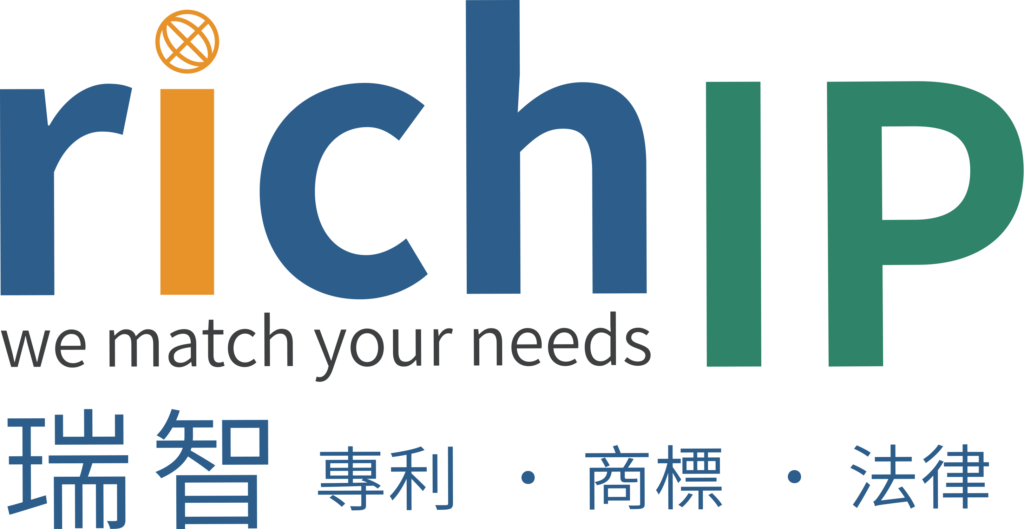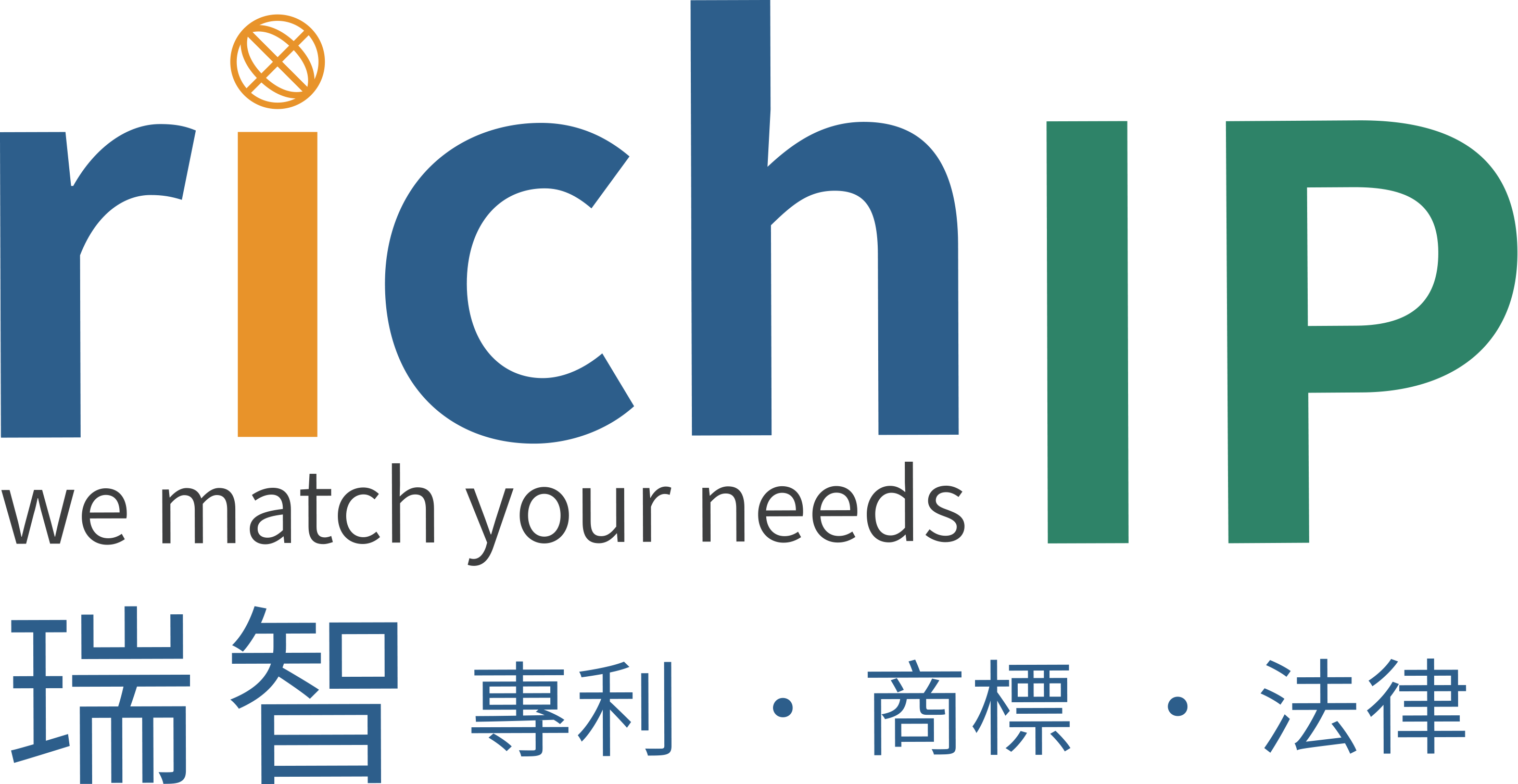News Topics
II.[TW] Changes to Accelerated Examination Program
III.[CN] Paper Certificates of Chinese Trademark Are No Longer Available
IV.[UK] Consultation for Patent System Involving AI
I. Spatial Design (Architectural And Interior) Is Clearly Specified As Eligible Subject Matter In Taiwan
The Substantive Examination Guidelines for Design Patents of Taiwan has been amended in 2020, in which the Taiwan Intellectual Property Office (TIPO) has added instructions and examples for “Spatial Design” descriptions and drawings (including architectural and interior designs).
According to the Chapter 3, Paragraph 2, Section 1.2 of Patent Examination Guidelines:The TIPO has clearly indicated that a corporeal object having a solid shape of three dimensions, including an architecture, a bridge or an interior design, could be a subject matter of design patents.
The drawings of spatial design for filing should contain the perspective view because the architectural design, interior design and like are the creations having the stereo perception (three-dimensional effect).
Following are the examples showing in different presentation types. Example 1 adopts the external perspective as usual design patents. Example 2 further adopts the internal perspective view to emphasize configuration of internal space. In addition, the explanatory figures indicate how to present the inner views.
Example 1: Portion of Kitchen
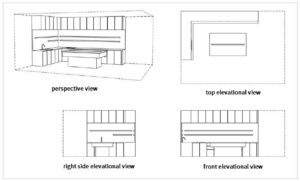
Example 2: Portions of Room
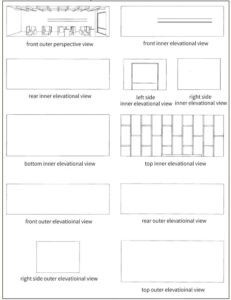
Explanatory figures
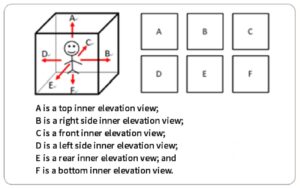
Our Proposals
Referring to the market development and success of many brands, we can understand that the interior decoration, architectural appearances and the arrangement of the physical stores are all important factors that establish the brand image. However, there are still very few spatial design patents in Taiwan, and the designers mostly rely on protection of copyright.
The advantage of copyright is that the creator obtains the copyright the minute the work is completed, and no formal application is required. However, when a dispute happens, the copyright owner shall bear the burden of proof of the existence of his/her rights, that is, he/she needs to prove his/her identity as the copyright owner, whether the accused infringer has the possibility of “reasonable contact” and/or other matters (for example, please refer to the Civil Judgment No. 2725 of Taishang Zi No. 109– Disputes on hotel housing furnishings), it is not an easy task.
For design patents, the documents that meet the formal requirements must be submitted at the time of application. When the patent right is granted, a clearer scope of protection and effective date of the right can be obtained. That is, there is a more solid basis for judgment in the infringement, and the evaluation whether an infringement can be concluded is relatively less uncertainty.
According to the above, we propose the designer applying for a design patent application when the drawings is completed, preferably before any publishment so as to avoid the risk of disclosing the design to unspecified third parties (such as printers and construction companies) and thus cause a bar to the novelty or being infringed by any third party.
References
Hyperlinks: Instructions for specification and drawings of design patents
Hyperlink: Chapter 3 of Patent Examination Guidelines
Hyperlink: Taiwan Design Patent No. D198655
Hyperlink: The Supreme Court’s Civil Judgment No. 2725
Chun-Wei Lo
Patent Counselor of RichIP Group
II. Changes to Accelerated Examination Program
According to the current Accelerated Examination Program (“AEP” for short) implemented by Taiwan Intellectual Property Office (TIPO), Applicant can request an accelerated examination as long as his/her Taiwan invention application meets one of the following conditions:
Condition 1: The corresponding application has been approved by a foreign patent authority under substantive examination.
Condition 2: One of the EPO, JPO or USPTO has issued an Office Action during substantive examination but has yet allowed the foreign counterpart of the invention application.
Condition 3: The invention application is essential to commercial exploitation.
Condition 4: Inventions related to green energy technologies.
TIPO has amended the AEP recently, and the amended AEP will come into force on January 1, 2022. The amendments include:
- replacing “green energy technologies” with “green technologies” in Condition 4; and
- changing the original notification deadline of examination results to “6 months” from “9 months” for Conditions 3 and 4.
The amendments to the AEP are good news to Applicant who has an invention application on and after January 1, 2022, because the bar of Condition 4 will become lower and the examination result under Condition 3 or Condition 4 can be obtained sooner.
References
Hyperlink: Announcement from TIPO
Dr. Cross Liu
Executive Manager of RichIP Group
III. Paper Certificates of Chinese Trademark Are No Longer Available
China National Intellectual Property Administration (CNIPA) has recently announced the following adjustments regarding paper certifications of trademark registration:
- Paper certificates of trademark registration will NOT be issued after January 1, 2022; and
- Within the transition period (from October 15, 2021 to December 31, 2021), CNIPA still issues paper certificates of trademark registration to applicants who have accessed the electronic certificates of trademark registration from the website (http://sbj.cnipa.gov.cn/) of the Trademark Office of CNIPA, under the situation that the applicants’ trademark applications were originally filed in writing.
References
Hyperlink: Announcement of CNIPA
Dr. Cross Liu
Executive Manager of RichIP Group
IV. Consultation for Patent System Involving AI
The UK government has recently launched a consultation on how the copyright system and the patent system should deal with Artificial Intelligence (AI). Regarding the patent system, this consultation is seeking evidence and views on the extent to which patents should protect inventions made by AI. The consultation is led by the UK Intellectual Property Office (UKIPO), and will last for 10 weeks, ending on January 7, 2022.
The consultation can be regarded as a follow-up of the call for views previously published by the UKIPO. As a recall, the questions on patents asked by the participants in the call for views process cover four themes, and the UK government has made responses for the four themes respectively, as listed below:
- The aims of the patent system
The UK government acknowledged that most participants support an effective and balanced patent system which can incentivize development of AI, but also notice that Intellectual Property (IP) may limit development of new technology. The UK government also got information from the participants about how different types of protection can be provided for different AI innovations, and would consider the IP landscape as a whole when considering next steps.
- AI as an inventor
The UK government agreed with several participants on that the current inventorship criteria may remain unchanged. The UK government, however, noticed that many participants have argued that the current inventorship criteria potentially have a detrimental impact on innovations, including transparency in the innovation process.
The UK government wanted to ensure transparency in the innovation process and that the inventorship criteria will not be a barrier to protect the development of AI. To achieve these aims, the UK government planned to consult later on a range of possible policy options, including legislative change, for protecting AI generated inventions which would otherwise not meet the current inventorship criteria.
- The conditions for granting a patent
The UK government acknowledged that although the conditions for the grant of AI patents in the UK look to be generally fit for purpose from the views received, there were mixed comments about patent exclusions. The UK government agreed that the UK patent system should ensure the right balance between the protection and disclosure of inventions and freedoms to innovate. The UK government agreed that AI inventors need UK patent exclusion practice to offer more clarity. The UK government also appreciated concerns that a lack of international harmonization in patent exclusion practice across patent offices places burdens on patent applicants. Therefore, the UK government was going to perform various improvements.
- Patent infringement
The UK government agreed with most participants on that the current practice of “legal persons” is liable for infringement. In addition, The UK government acknowledged that in respect of “AI patents,” the courts have appropriate flexibility to make decisions based on the facts of the case, and claimants are able to use court processes to support their actions. Thus, The UK government did not intend to intervene in this area.
Takeaway
AI can overcome many problems surrounding human life, but also make impact on IP right worldwide. To seek a maximum balance between flourishing development of AI and robust protection of IP right, many counties, including the UK, have done some surveys and researches on the pros and cons in respect of IP right involving AI, and will appropriately adjust the current regulations of IP right in the future. Despite that the regulations of IP right are different in different countries/regions, there appears a consensus that the protection of IP right needs to cover AI’s contributions.
References
Hyperlink: Announcement of UKIPO-Consultation on copyright and patents legislation
Dr. Cross Liu
Executive Manager of RichIP Group
